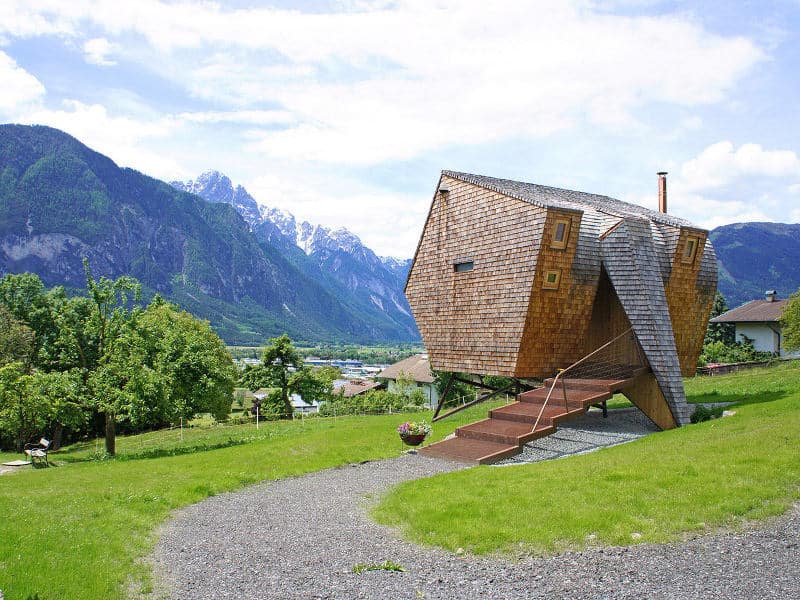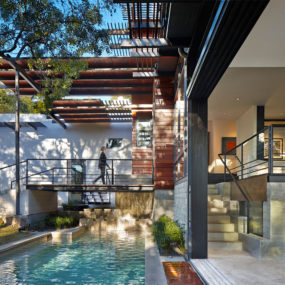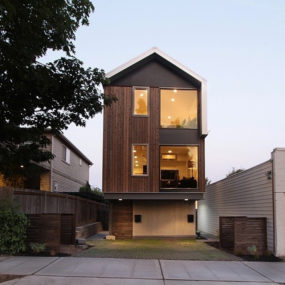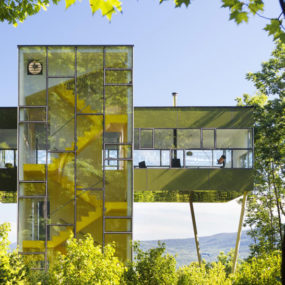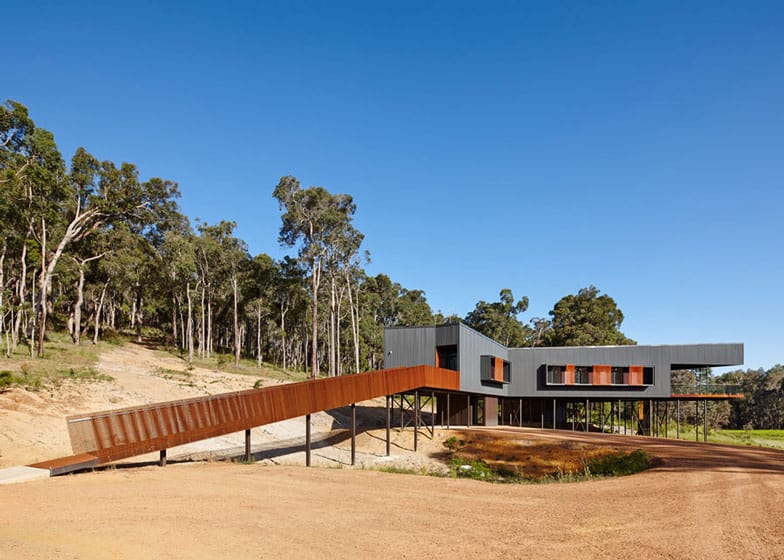
Located in the bush land of Australia the Nannup Holiday House was designed by Iredale Pedersen Hook to minimize the impact on the surrounding landscape. This was achieved both through design and materials chosen, as well as the construction methods used. By rising the home on stilts the natural flora and fauna can continue uninterrupted throughout the building zone and the integration of numerous sustainable features allows the homeowners to create a minimal amount of impact when using their vacation home, additionally much of the home was prefabricated off site thereby creating a minimal construction footprint.
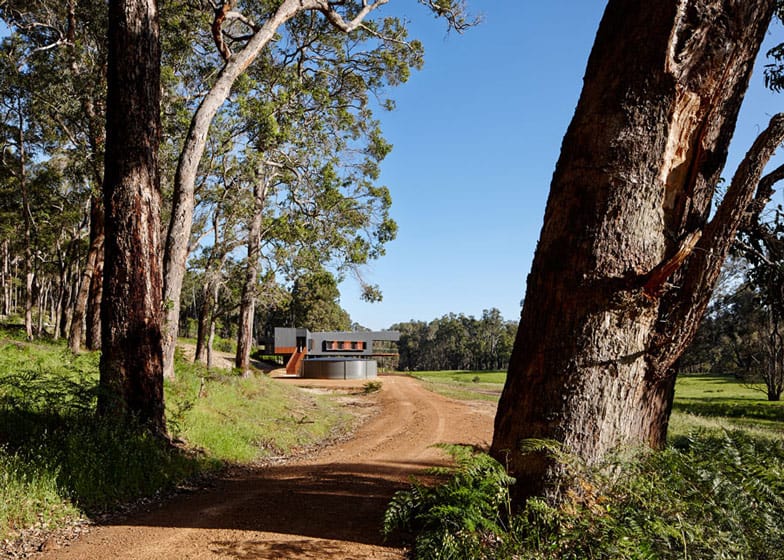
Even the location of car access was carefully thought out, placing it on the site edge in an area that needs annual clearing for the home’s firebreak. By placing it in an area that requires clearing the architects have minimised the amount of clearing needed within the site. The gravel and yellow sand used to create the access path have been quarried from the site which was then re-established with plant species native to the site.

The site is centrally located between a forest and a flood plane which makes it an ideal habitat for local flora and fauna such as human sized wild pigs, tiger snakes, dugites emus and kangaroos.

Because of the natural environment that surrounds the Nannup Holiday House, the architects chose materials for the exterior that would harmonize with their surroundings. Materials used where Dark colourbond Steel, rusting steel and recycled Jarrah wood.
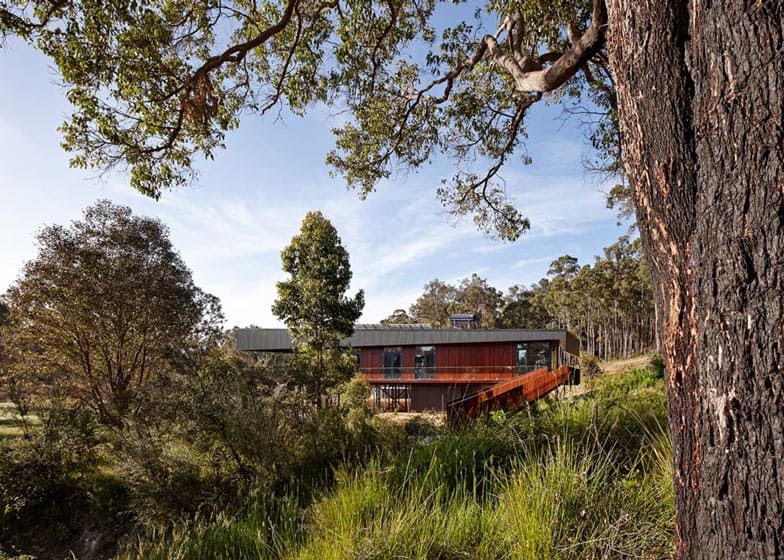
The deep tones of the materials used give the home a visual effect of a fallen log amongst the trees.

The footprint of the home is long and linear with a couple of zigs and zags. This changing of direction within the home takes advantage of the various views such as the dense forest and the open horizon. By elevating the home on stilts the views are further enhanced.
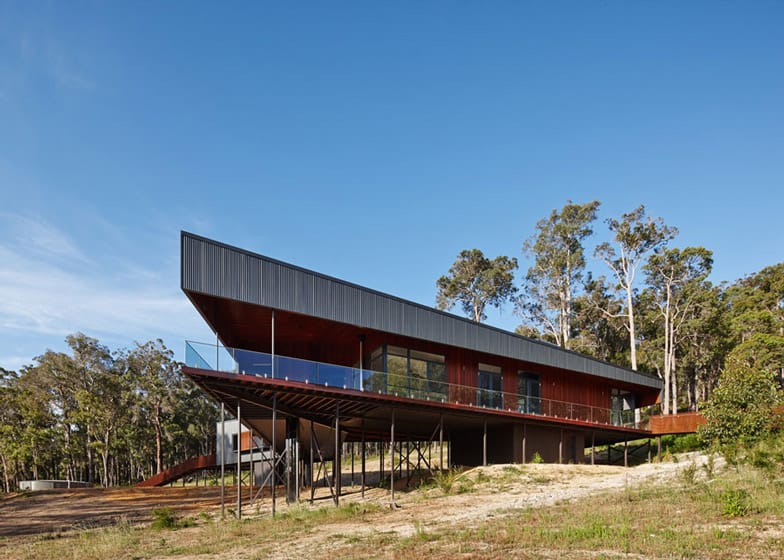
Access ramps lead to/off the home on two sides for an uninterrupted flow and both ramps are also connected via terraces that follow the exterior profile of the home.
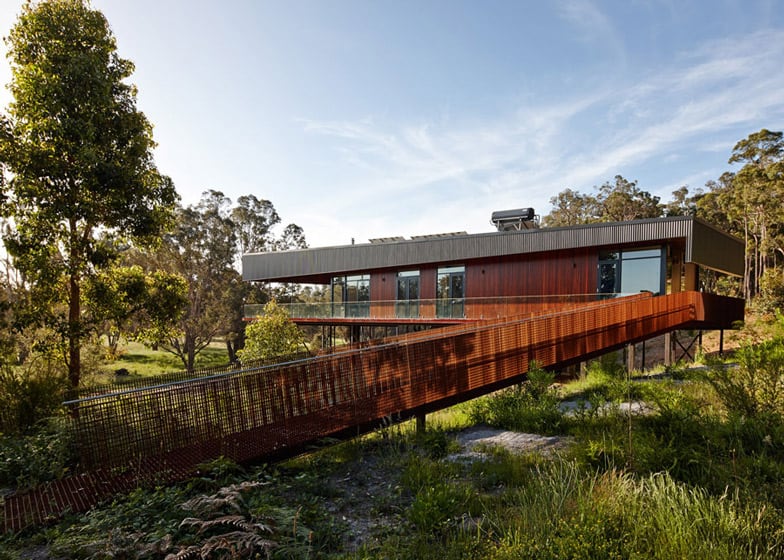
The long steel grate ramps offer a leisurely access to and from the elevated home leading to the entry on one end and an outdoor lounging zone within a terrace on the other.

The use of stilts continue the imagery of the tree trunks in the distance, even the cross bracing references those trees that have been pushed over without quite falling due to winds and surrounding trees.
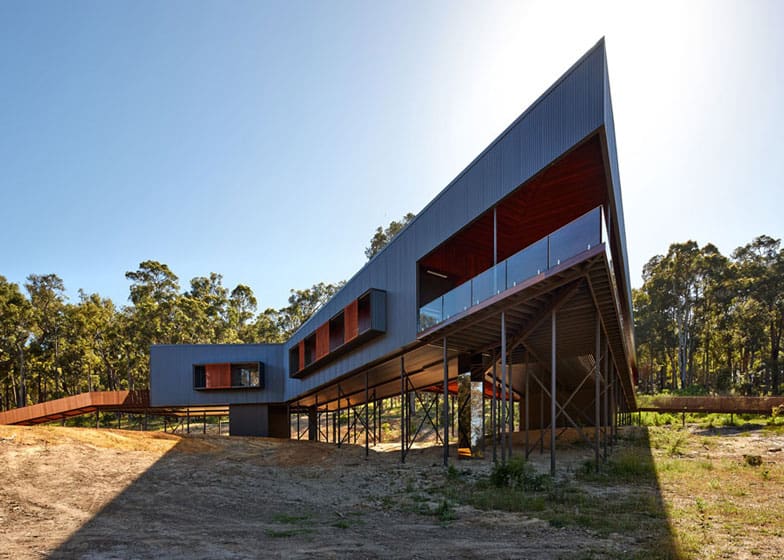
The angular terrace appears to be pointing to the flood plain beyond. If the floods ever reach the home, it will be safe on its elevated perch.

The same perforated steel sheets used on the two ramps continue along the terraces as both floor and safety rails.

The balcony at the far end of the building replaces the steel sheets with a wood decking and tempered steel safety rails. The extended roofline offers this outdoor lounging area a sheltered place to enjoy the sounds, views and smells of the locale without the intensity of the sun or rain.

The entry opens to an interior corridor that leads past the bedrooms, laundry and study before arriving at the two terraces on either side of the open plan social zone. Dark Jarrah wood was used on the corridor floor to contrast with the bright interior.

Treated plantation pine was used for 90% of the buildings framework while recycled local timbers where used on the outdoor decks, interior flooring and interior storage via timber off cuts. Colourbond cladding provides a durable exterior core.

The long roof is designed to capture rainwater that is then reused within the home. Grey water is recycled for watering the landscape under the house. Water is heated from a solar hot water system that has a backup by gas hot water systems located close to the areas of water use. Water consumption is reduced with rated fixtures and fittings. Additionally the photovoltaic panels on the roof also supply the home’s power. Wood finishes are applied with low VOC or oil and most of the furniture within the home is constructed from Hoop Pine plantation plywood.
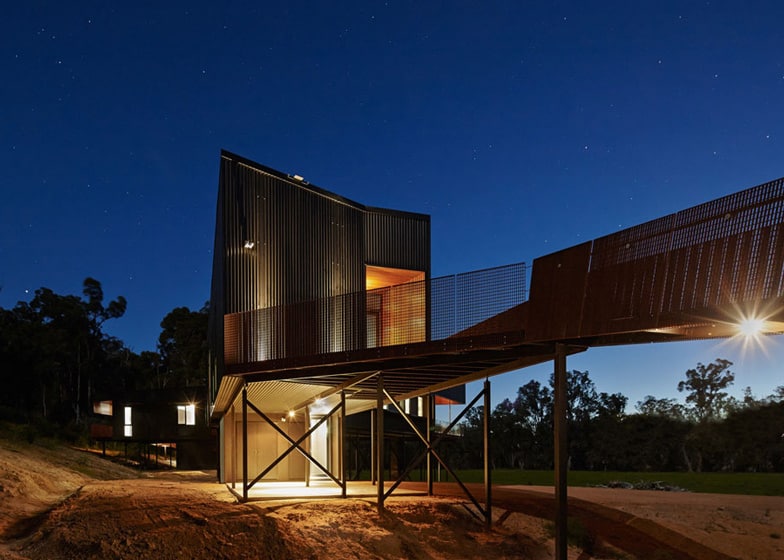
Iredale Pedersen Hook
Photography by Peter Bennetts
